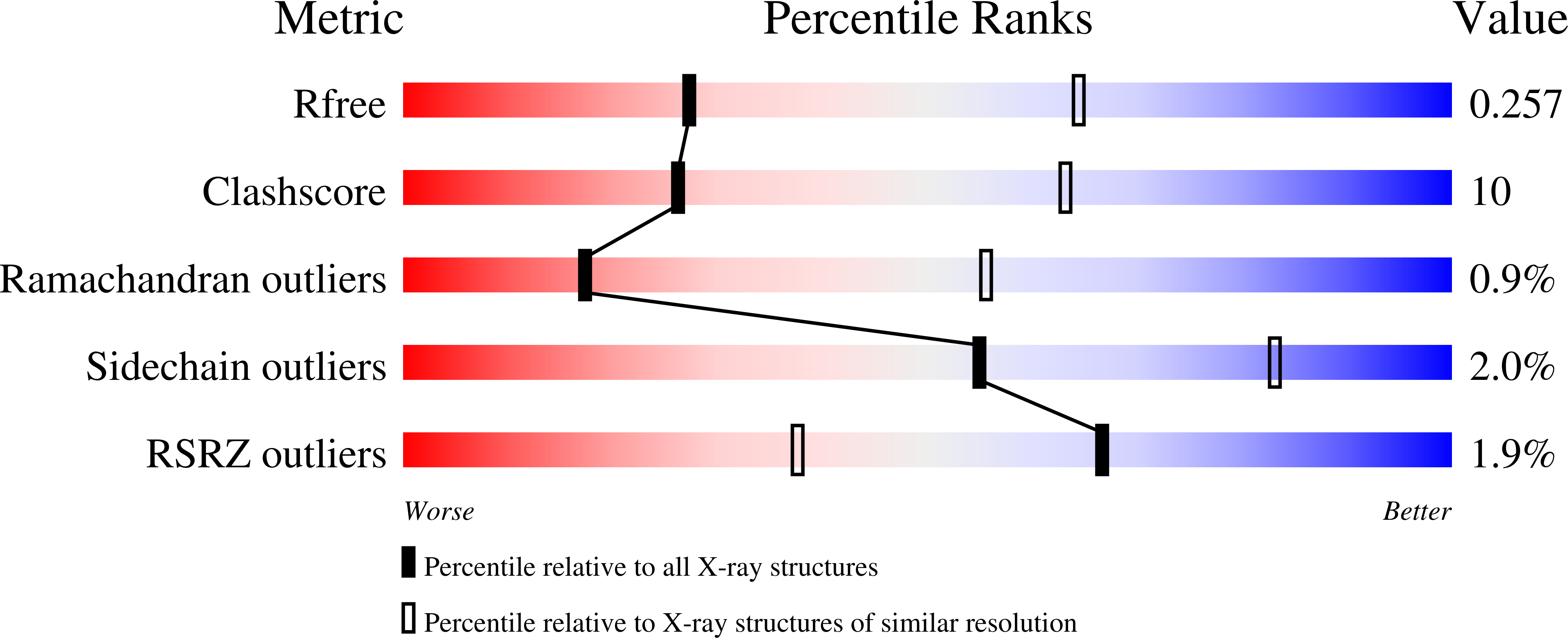Gut Microbial beta-Glucuronidase Inhibition via Catalytic Cycle Interception.
Pellock, S.J., Creekmore, B.C., Walton, W.G., Mehta, N., Biernat, K.A., Cesmat, A.P., Ariyarathna, Y., Dunn, Z.D., Li, B., Jin, J., James, L.I., Redinbo, M.R.(2018) ACS Cent Sci 4: 868-879
- PubMed: 30062115
- DOI: https://doi.org/10.1021/acscentsci.8b00239
- Primary Citation of Related Structures:
6BJQ, 6BJW, 6BO6, 6D4O - PubMed Abstract:
Microbial β-glucuronidases (GUSs) cause severe gut toxicities that limit the efficacy of cancer drugs and other therapeutics. Selective inhibitors of bacterial GUS have been shown to alleviate these side effects. Using structural and chemical biology, mass spectrometry, and cell-based assays, we establish that piperazine-containing GUS inhibitors intercept the glycosyl-enzyme catalytic intermediate of these retaining glycosyl hydrolases. We demonstrate that piperazine-based compounds are substrate-dependent GUS inhibitors that bind to the GUS-GlcA catalytic intermediate as a piperazine-linked glucuronide (GlcA, glucuronic acid). We confirm the GUS-dependent formation of inhibitor-glucuronide conjugates by LC-MS and show that methylated piperazine analogs display significantly reduced potencies. We further demonstrate that a range of approved piperazine- and piperidine-containing drugs from many classes, including those for the treatment of depression, infection, and cancer, function by the same mechanism, and we confirm through gene editing that these compounds selectively inhibit GUS in living bacterial cells. Together, these data reveal a unique mechanism of GUS inhibition and show that a range of therapeutics may impact GUS activities in the human gut.
Organizational Affiliation:
Department of Chemistry, Center for Integrated Chemical Biology and Drug Discovery, Eshelman School of Pharmacy, and Integrated Program for Biological and Genome Sciences, and Departments of Biochemistry and Microbiology, University of North Carolina at Chapel Hill, Chapel Hill, North Carolina 27599, United States.














